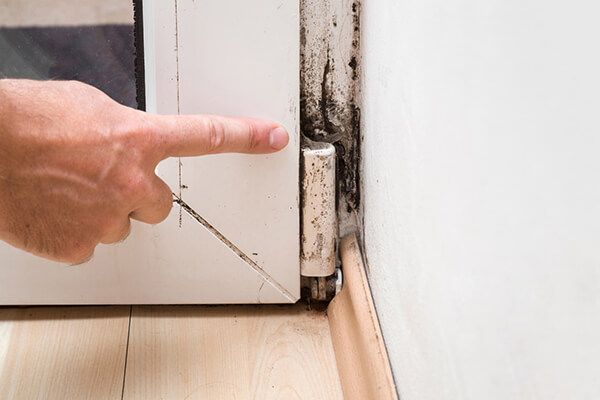After Mold Remediation Techniques for Tidy Spaces
After Mold Remediation Techniques for Tidy Spaces
Blog Article
Expert Tips for Blog Post Mold And Mildew Remediation Success
In the world of mold and mildew remediation, successfully eradicating mold and mildew is only half the battle; the real difficulty lies in preventing its reappearance. By sticking to professional pointers and ideal techniques, people can secure their areas versus mold and mildew renewal and preserve a healthy and balanced indoor setting.
Screen Humidity Levels Routinely
After completing mold remediation procedures, keeping ideal humidity degrees is vital to stop mold re-growth and ensure a healthy interior setting. High humidity levels above 60% create a conducive setting for mold and mildew to thrive, making regular keeping track of an aggressive measure to prevent any future mold issues.
Additionally, developing a regular schedule for humidity checks, specifically in high-risk areas such as kitchen areas, shower rooms, and basements, is a proactive strategy to mold and mildew prevention. By constantly keeping track of humidity degrees, residential property proprietors can effectively minimize the risk of mold and mildew reoccurrence and preserve a healthy indoor environment post-remediation.
Conduct Thorough Inspections Post-Remediation
Adhering to the conclusion of mold and mildew removal procedures, it is critical to carry out extensive examinations to validate the performance of the removal process. These post-remediation evaluations are crucial in making sure that the mold concern has actually been efficiently attended to and that there is no recurrence or remaining mold and mildew development. Assessments ought to be accomplished by certified experts who have experience in determining mold and mildew and analyzing interior air high quality.
During these examinations, numerous approaches such as aesthetic assessments, air tasting, and surface area tasting might be utilized to extensively review the remediated areas. Visual analyses entail a detailed examination of the facilities to inspect for any kind of noticeable indicators of mold growth or water damage. Air sampling helps in identifying the airborne mold spore degrees, while surface tasting can discover mold and mildew fragments on surface areas.
Implement Proper Ventilation Strategies
After making certain the efficiency of the mold removal procedure via extensive evaluations, the following crucial action is to concentrate on executing proper ventilation methods. Ample ventilation is vital in avoiding mold and mildew reoccurrence by controlling dampness degrees and promoting air circulation.
Proper ventilation not only aids in protecting against mold and mildew development but likewise contributes to the general wellness and convenience of passengers. By guaranteeing appropriate ventilation throughout the residential property, you can decrease the threat of mold regrowth and produce a much healthier living environment.

Usage Mold-Resistant Products for Repair Works
To enhance the long-term performance of mold and mildew removal initiatives, integrating mold-resistant products for repair services is critical in minimizing the risk of future mold development. Mold-resistant products are created to hold up against wetness and prevent mold growth, making them an important choice for areas vulnerable to dampness and moisture. When fixing areas impacted by mold, making use of materials such as mold-resistant drywall, mold-resistant paints, and mold-resistant caulking can assist avoid mold and mildew recurrence.
Mold-resistant drywall is an exceptional alternative to conventional drywall in locations like cellars and restrooms where dampness levels are greater. When revealed to damp problems, this type of drywall has an unique finish that withstands mold and mildew growth even. In addition, utilizing mold-resistant paints having antimicrobial agents can better prevent mold and mildew advancement on ceilings and walls.
In areas where dampness prevails, such as bathrooms and kitchens, using mold-resistant caulking around home windows, bathtubs, and sinks can help secure out water and protect against mold and mildew from taking hold in cracks and gaps. By buying these mold-resistant products during repair work post-remediation, you can dramatically lower the possibility of future mold concerns and keep a much healthier interior atmosphere.
Maintain Cleanliness and Address Water Issues
After mold remediation, it is vital to preserve a clean environment to protect against the regrowth of mold and mildew. Leaks, water intrusion, or high moisture degrees can develop the ideal breeding ground for mold and mildew, so it is essential to repair any water-related problems quickly.
To keep tidiness, consider making use of HEPA filters in vacuums and air cleansers to trap mold and mildew spores and avoid their blood circulation in the air. Guaranteeing correct ventilation in areas vulnerable to moisture buildup, such as kitchens and bathrooms, can assist maintain moisture levels in remove mold spots from outdoor cushions check. By staying vigilant regarding cleanliness and addressing water concerns immediately, you can properly stop mold and mildew reinfestation and maintain a healthy and balanced indoor atmosphere.
Verdict

In the world of mold and mildew remediation, efficiently eliminating mold and mildew is only half the battle; the real obstacle exists in stopping its reappearance. After completing mold removal treatments, keeping ideal moisture degrees is vital to prevent mold and mildew re-growth and make certain a healthy interior setting. High humidity degrees over 60% produce a favorable atmosphere for mold and try this site mildew to flourish, making regular keeping track of an aggressive action to avoid any future mold and mildew concerns.
To boost the lasting efficiency of mold and mildew removal initiatives, incorporating mold-resistant materials for repairs is important in alleviating the risk of future mold development. After mold and mildew remediation, it is vital to keep a clean setting to prevent the regrowth of mold.
Report this page